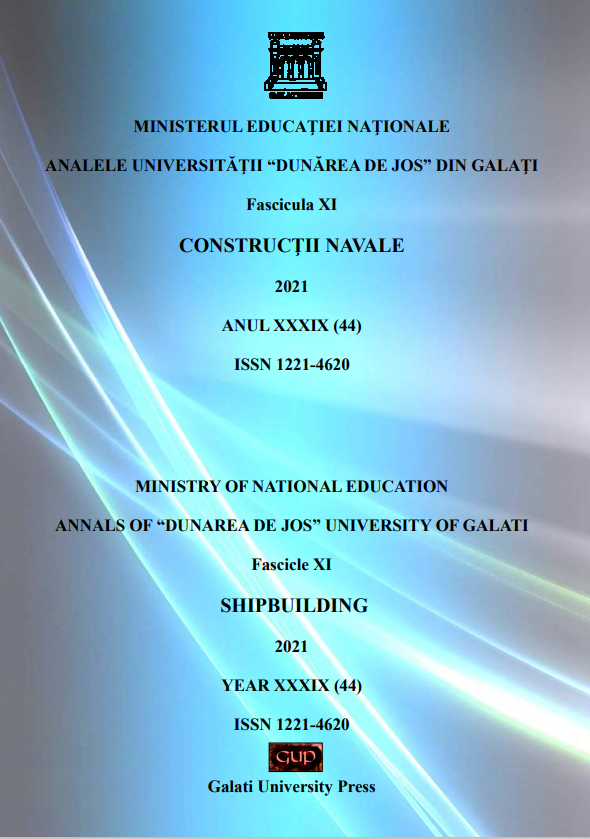Experimental model tests to improve a tanker resistance performance
Abstract
The ship resistance is one of the most important hydrodynamics performances, being related to the contractual ship speed. The experimental model tests can be used to measure and improve the resistance performance. In this paper, the possibility of using the experimental techniques in order to improve a tanker model resistance is demonstrated, based on a bulbous bow modelling solution. In this context, the results obtained in the Towing Tank of the Naval Architecture Faculty of “Dunarea de Jos” University of Galati, related to a tanker model resistance with and without bulbous bow are presented. The bulbous bow form was realised based on the hydrodynamics principles adapted to the bow forms of the tanker. In the case of the bulbous bow solution, a significant reduction of over 8% of the tanker model resistance was obtained, in the design speed domain.
Downloads
References
[2]. ITTC Recommended Procedures and Guidelines 7.5-01.01.01, “Ship models”, 26rd ITTC, 2011.
[3]. ITTC Recommended Procedures and Guidelines 7.5-02.02.01, “Testing and Extrapolation Methods. Resistance Test”, 23rd ITTC, 2002.




